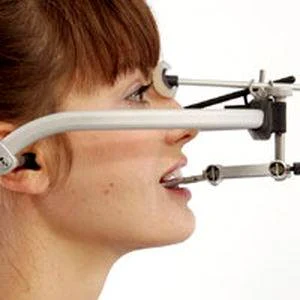Maxillmandibular Relation
Maxillmandibular Relation
"Jaw relation is defined as, ‘’ any relation of the mandible to the maxilla’’ which may be one of the three relations
,Orientation jaw relation ‘Facebow
Vertical jaw relation
Horizontal jaw relation
Orientation jaw relation ‘Facebow’
This record gives the angulations of the maxilla in relation to the base of the skull. The plane of maxilla maybe tilted in some patient while the plane of mandible will not be altered because it articulates with the base of skull
Hence, the maxillary tilt will altered the relationship of the maxilla to the mandible during different movement
So, It is necessary to do orientation jaw relation before carrying out other jaw relation by face bow.
Vertical jaw relation
The length of the face as determined by the amount of separation
Factors affecting vertical jaw relation
Teeth: act as occlusal vertical stops
Musculature: be in a state of minimal tonic contraction
Vertical jaw relation can be recorded in two positions
Vertical dimension at rest position
Vertical dimension at occlusion
Both these relations should be recorded
In a normal dentulous patient, the teeth do not maintain contact at rest
The space between the teeth at rest is called the ‘’ free-way space’’
The free-way space exists only at rest
The vertical dimension at occlusion should always be 2-4 mm lesser than the vertical dimension at rest
Vertical dimension at rest
The length of the face when the mandible is in rest position
This is the position of the mandible in relation to the maxilla when the maxillofacial musculature are in a state of tonic equilibrium
It is essential to record the vertical dimension at rest as it acts as a reference point during recording the vertical dimension at occlusion
VD at rest = VD at occlusion + free-way space
( VD – vertical dimension)
Methods can be used to measure the vertical dimension at rest
Facial measurements after swallowing and relaxing
Tactile sense
Measurement of anatomic landmarks
Speech
Facial expression
We will explain only the first method
Facial measurements after swallowing and relaxing
The patient is asked to sit upright and relax
Two reference points are marked, on the tip of the nose and the tip of the chin
The patient is asked to perform functional movements like wetting his lips and swallowing
The patient is instructed to relax his shoulders
Once the patient performs the above mentioned movements, his mandible will come to its physiological rest position
The distance between the two reference points is measured when the mandible is in its physiological rest position
Vertical dimension at occlusion
The length of the face when the mandible is in occlusion
Recording of Vertical dimension at occlusion
Mechanical methods:
Ridge relation
Pre-extraction records
Measurement from former dentures
Physiological methods
Using wax occlusal rim
Physiological rest position
Phonetics
Aesthetics
Swallowing
Tactile sense
Patient’s perception of comfort
Only phonetic method we will discuss
Phonetics
This involves observing the movements of the oral tissues during speech and more importantly listening and analyzing the speech of the patient
The Max. and Mand. Show a relationship during speech
Used to determine the vertical dimention
Two common methods of phonetics
Silverman’s closest speaking space
The ‘F’ OR ‘V’ AND ‘S’ speaking anterior tooth relation
Silverman’s Closest Speaking Space
Measures the vertical dimension when the mandible is in function
This differs from the Niswonger’s and Thomson’s method
When sounds like ch,s,j are pronounced, the upper and lower teeth reach their closest relation without contact
This minimal amount of space between the upper and lower teeth in this position is called the Silverman’s closest speaking space
This space indicates the vertical dimension of the patient
The ‘’F’’ or ‘’V’’ and ‘’S’’ speaking anterior tooth relation)
The incisal guidance is established by arranging the anterior teeth on the occlusal rim before recording the vertical dimension at occlusion
Horizontal jaw relation may be
Centric relation
eccentric relation
Centric relation

















Comments